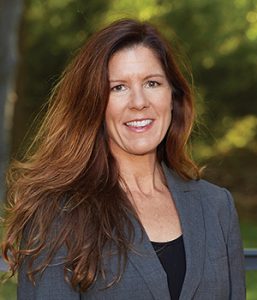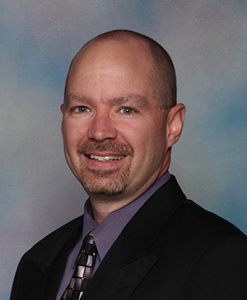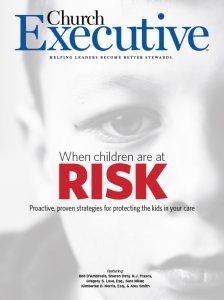
Proactive, proven strategies for protecting the kids in your care
 Q: What are the biggest risks and liabilities facing churches in the area of protecting children?
Q: What are the biggest risks and liabilities facing churches in the area of protecting children?
D’Ambrosio: The days are over when ordering a background check on a new volunteer was the ultimate ‘extra-mile’ effort of an ultra-careful church. Today, a background check is standard practice — period. But, it’s also just one part of a screening effort to ensure safety.
Churches need a comprehensive safety plan, including screening, safety policies and procedures, abuse awareness, and training.

Ministry Consultant
Shepherd’s Watch Background Checks from Group Publishing
Doty: One of the biggest risks churches face is youth ministers, choir directors, counselors, teachers and coaches who think they don’t need to pay attention to prevention efforts. Many assume it won’t be an issue in their ministries.
Another challenge is that many regard the issue as if it’s resolved or ‘someone else’s problem’ — i.e., issue fatigue. Recently, for example, a church secretary elected not to share information about scheduled abuse prevention training with a group of homeschooling parents / church members. Why? Because she was uncomfortable with the subject matter.
Another problem is perpetrators’ use and proliferation of social media apps to groom youth. Parents need to familiarize themselves with these apps, and which ones their children use.
Frasca: I‘d say the biggest risk is not truly knowing those you’re working with.

Estimates have shown 90% of child sex offenders have no previous criminal records.
Also, developing a comprehensive program to protect your children and church from predators can be a very daunting task.
Miller: Not every state requires faith-based child care centers to be licensed; so, many protections are overlooked, such as CPR / SIDS trainings, background checks and ratios.
Not being able to remotely access information in times of emergencies is another problem. Many churches use outdated systems for child tracking (including pen and paper). This hinders children’s safety on a daily basis. If all parents’ emergency contact information is written down in the church and filed in an office, how would it be accessed if a fire broke out at the church and children had to be evacuated? How would each classroom know who was present?

Being able to access that information on a mobile device makes it easy to be prepared in any situation. It also speeds up the sign-in / sign-out process.
Smith: The No. 1 reason churches are taken to court are allegations of child sexual abuse. Even if abuse isn’t proven, a single accusation can be devastating, both financially and reputationally, to the church, resulting in a destroyed ministry.
Q: What makes churches targets for sexual abuse risks?
Doty: A culture of trust and welcome. Unfortunately, this is a magnet for predators who see the church as vulnerable and take advantage of that.
Also, there are some who think the ‘healthy suspicion’ piece of our safe-environment training undermines a culture of

SmartCare
trust and welcome. What they forget (or simply don’t realize) is that God encourages us to welcome the sinner and to support those who wish to change their ways — but that doesn’t mean complete, unsupervised access to the most vulnerable among us.
Another concern is that we’ll damage a welcoming attitude for volunteers. Volunteers are great, but there’s a lot at stake when we give them too much access. Without proper screening, we place our children and the good names, reputations, finances and well-being of our adult parishioners at risk.
Norris: Churches too often have the misconception that ‘sexual abuse doesn’t happen here,’ which is inaccurate. Child sexual abuse skips no spiritual paradigm. In fact, one large study indicated that the prevalence
of child sexual abuse is slightly higher in ‘very religious environments.’
Frasca: Sexual predators will always target a highly trusted environment

where children are present. Churches inherently feel safe for parents when it comes to their children, making them an ideal target.
Miller: Churches aren’t the only settings vulnerable to these risks; any unlicensed child care setting is at risk because there are no minimum standards that must be met. If a child care setting is unlicensed, there are no requirements for ratios or background checks, which can leave children at risk.
Smith: Predators know how to portray themselves as professional, caring and kind — the ‘ultimate volunteer.’ And everybody is always short of volunteers. Predators know this and capitalize on it; in fact, more than 90% consider themselves ‘religious’ or ‘highly religious.’ So, they know (even if they agree to a background check) that it might not be followed up on, and references might not be interviewed.

It’s important to point out that only about 10% of sexual abuse cases get
prosecuted in the United States. Consequently, quite a few offenders won’t show up on the National Sexual Offender Registry.
No one wants to believe a human being is capable of targeting a child for sexual abuse. But the sad truth is, they will work tirelessly to gain trust and access to their victims.
D’Ambrosio: Churches often buy into one of three myths regarding background checks: (1) that they ‘know’ everyone in their church; (2) that one background check, performed once, is enough; and (3) a local or state check is adequate.
Sadly, in as many as 93% of child sexual abuse cases, the child knows the abuser. Most perpetrators are well-known acquaintances.
Additionally, many insurance providers now mandate re-screening — annual background checks — to maintain liability coverage.
Finally, people with a criminal past move from state to state. They might have committed a criminal offense outside the state in which they reside.
Q: In large churches, how common is a written child protection policy? What common oversights or mistakes do you observe?
Frasca: It’s very common for larger churches to have documented child protection policies in place. Although they cover most of the basics, many of these policies are dated and / or incomplete when it comes to everything that should be included. A good protection policy should be reviewed often. If churches don’t have the right expertise in-house, it’s wise to consult experts in the area while developing policies.
Miller: Even with policies in effect, many times background checks are only performed one time, prior to employment. Large churches can better their policies by writing in background checks on a more routine basis, depending on budget.
Smith: Most large churches are aware that such a policy needs to be in place, and insurers even require it. They’re also aware of the risks of operating without one.
As with any operating document, however, a child protection policy can easily be written and then shelved, rather than treated as a living document that needs to be updated, referred to, and followed.
A lot of children’s ministry directors point to a lack of leadership support for abuse prevention efforts, or the raising of awareness of the risks in the church. No one wants to push people away or alienate volunteers, and there’s a perception that vocally supporting these efforts sends a negative message about the church.
The reality is just the opposite: an effective abuse prevention policy is the No. 1 thing on a new family’s mind when they enter a church.

D’Ambrosio: Although many churches have some elements of a written policy in place, they often lack a comprehensive program to minimize liability and protect children. A total-safety program for volunteers should include: up-to-date position descriptions; policies and procedures; background screening; reference-checking; supervision; and documented training and orientation.
Churches must demonstrate due diligence. And the standard is high, since most public schools and secular organizations that offer children’s programs are already implementing these practices.
Whatever a church establishes as its safety protocol, it has to be consistent and applied to everyone.
Doty: In the Catholic Church, a written policy is extremely common; in other churches, perhaps not so much. Many non-denominational megachurches haven’t addressed this issue at all. Some denominations have policies in place for screening and for physical-environment safety, but enforce somewhat limited application. Obviously, churches with no policy are putting lives at risk every day; yet, many are unconvinced it’s an issue.
Other churches with policies in place are focused primarily on avoiding liability if there is an issue. They actually look to see where they’re vulnerable and then enact policies to shore off those areas. (For example, if a church’s central body has no local control over how a congregation functions, that church might only have programs that apply to regional or area-wide gatherings.)
In some cases, these programs are highly recommended; but the only mandate for prevention education that we’re aware of is the Catholic mandate in the Charter for the Protection of Children and Young People.
Norris: Many churches have written policies that look like ‘War and Peace’ and aren’t truly followed. Policies are what you do, not what you say you do. When an allegation of sexual abuse results in civil litigation, both defense counsel and plaintiff’s counsel will immediately request the church’s policies. Policies demonstrate a church’s reasonable efforts to address the risk of child sexual abuse, but they’re only effective if applied. Often, church staff members and volunteers need to understand the ‘why’ of preventative protocols in order to adopt the ‘what,’ and that boils down to training. Intrinsically, you can’t address a risk that your staff members don’t understand.
Q: What does a truly comprehensive screening and background check process look like as it relates to protecting children in
the church?
Miller: It includes using fingerprints for checks of FBI criminal history records; using fingerprints for state checks of criminal history records; checking the child abuse registry; and checking the sex offender registry. These checks should be done on a routine basis for both perspective and current employees.
Personally, I believe most large-church clients try to do everything they can to protect children in their care. And although they often have policies in place to protect children, they don’t always go far enough to ensure children will always be safe at church.
The biggest area where churches are falling short are ratios and background checks for current employees. Because many faith-based centers are licensing-exempt, they don’t have to follow the ratio requirements other child care centers in the state must adhere to. So, church classrooms might have more students per teacher, making it harder on the staff.
With regard to employee background checks, most church clients don’t do them routinely for current staff. They might do it pre-employment; but, if an employee is charged with a crime during his or her employment, many employers will miss this.
Smith: For a new volunteer, several elements make up an effective onboarding process. A background check is one of those things, but not enough on its own. You need to require a complete written application. Get references … and actually call them. Do a face-to-face interview.
We also recommend a waiting period of 30 to 60 days, which lets you find out: Are they faithful? Are they regular attenders? Are they connected?
A social media check is always important, too.
So often, the challenge for churches in doing a truly comprehensive screening process is the cost. And it’s not even a one-time event; you should rescreen every 12 to 24 months. To share the burden, we suggest asking volunteers to pay for their own background check (usually between $10 and $20). I’ve never heard of anybody refusing.
Finally, quite a bit can be accomplished by simply communicating your church won’t take a passive stance on abuse prevention. Make sure volunteers know you have a thorough screening process, and you’ll deter a lot of really bad behavior.
D’Ambrosio: A thorough background screening must include social security verification, criminal records from jurisdictions in all 50 states, and the National Sex Offender Registry. If driving is part of the ministry role, then a motor vehicle report should also be included.
Church leadership must first decide which criminal offenses would automatically disqualify someone from serving with children. For example, would a speeding ticket that happened 10 years ago prevent someone from working in the nursery?
Also, establish which positions will require screening and which positions are exempt. The volunteer who makes reminder calls to your Sunday school teachers will not need the same level of screening as someone who works directly with the kids.
Make sure your background check provider owns and maintains its data, and is Federal Credit Reporting Act (FRCA)-compliant. A good source provider pulls from multiple court registries to offer comprehensive search options.
Large churches (like small ones) often bend the rules when it comes to safety. What’s required for a comprehensive risk management program is to identify what processes will accomplish eliminating or lowering your risks — then enforcing those processes, period. Being found negligent, just once, could result in financial damage your church or ministry couldn’t survive.
Doty: A truly comprehensive screening and background check includes: a written application (for both staff and volunteer positions) that includes references for people who can talk about the person’s work with children; a face-to-face interview that includes reviewing policies, letting the person know about the monitoring practices, and making expectations and consequences of violations clear; a criminal background check that checks across the country for any wrongdoing that could compromise the person’s ability to work safely with children; and a written or electronic acknowledgement from the person that they read and understood practices and policies.
Some large Catholic Churches have found ways to complete this process even with large numbers of staff and volunteers. At one church, staff gleaned the names of all the HR professionals in the church membership and invited them to participate in a two-evening screening process. Those HR professionals took on applicants and conducted the interviews, checked references, and went through the policies and procedures. The entire group was screened in two days.
When churches are committed to the process, they can find creative ways to accomplish it.
Frasca: A truly comprehensive screening program contains not only background checks suited to geographic location and position being applied to, but also a detailed child safety training program. Additionally, the program should include a rescreening policy.
Even in large churches, we find it’s actually quite common that not everything that can and should be done, is — simply because they’re unaware of all that entails. In a large majority of cases, we see churches lacking in the area of proper child safety training.
Background screening will only catch those who have already been caught, or throw red flags that might identify discrepancies in one’s past. Child safety training teaches employees and volunteers how to spot signs of abuse or potential abuse. The first and most critical step in stopping abuse and protecting children is identifying when they’re at risk.
Norris: Criminal background checks have become a standard of care; making a reasonable effort to access the past criminal history of an applicant. Because less than 10% of sexual abusers will encounter the criminal justice system, criminal background checks can’t be relied upon as a standalone screening system. An effective screening process utilizes forms and processes meant to illicit a high-risk response from applicants or references. Effective screening encourages an inappropriate applicant to ‘opt out’ during the screening process, before he or she has harmed a child.
Q: What elements does a truly risk-averse, comprehensive child check-in / check-out process at a church look like?
Miller: There should be a check-in and check-out process for Sunday school and an additional process for churches providing child care. While similar, each setting has different variables for success. Elements to consider are efficiency, technology barriers, safety, parent buy-in, and effectiveness. All the layers of a comprehensive plan might be in place; but if parents aren’t on board, the process won’t be effective.
Again, this answer is different depending on the care that’s provided. Many churches have multiple points of entry that should be monitored for safety and security. For churches that provide child care throughout the week, do parents have to enter through one door? Are they able to do drive-thru drop-offs? How can staff accurately track check-in and out from vehicles? With today’s technology, the internet allows centers to track child check-in and check-out with mobile devices and systems that are more safe and secure than pen and paper.
For ministry on Sunday, parents are typically on-site, and the need to update emergency contact information is different with the parents just down the hall. For churches providing child care, parents typically drop off children in the morning and can be reached through different methods throughout the day. Do parents prefer email or texting while at work, or do they always prefer a phone call? Technology has changed the way teachers and directors communicate with parents, and making sure you have a system that works for families in your church is crucial, especially in case of emergency.
Smith: Having a secure children’s check-in process is a very important piece of the overall safety puzzle. In today’s environment, a good check-in process should significantly enhance security, be intuitive and easy to setup, provide quick access to important data, and not be limited to a hardware station. The process you implement must be one your staff, volunteers and parents can quickly understand, consistently use and easily follow.
Looking at the check-in / check-out process as simply attendance tracking misses the point. Secure children’s check-in can also reduce the workload for children’s ministry leaders. Features such as parent-maintained accounts, Express Check-In (parents check in on smartphone), and broadcast text messaging and email can free up time and direct effort into building relationships with new and existing families.
It’s the people behind the process that determine the ultimate success of the system. Without the proper implementation, training and ongoing support, little value will be added. Whether you have 50 or 3,000 children, the process should be scalable and seamless, with an emphasis on improving child safety.
D’Ambrosio: Child check-in systems allow for accountability and give the staff an accurate census of who’s in the building. A lost child is most parents’ biggest fear — and for church children’s ministry workers, too.
When designing a space for children’s ministry, be sure to have a single entry point. The access point should be staffed to authorize clearance for any adult who enters. Only adults who staff the program, and are identified with a photo ID badge, should be allowed to enter. Doors intended as exits should not allow reentry from outside. It’s also wise to have windows that open to the hallway or are built into each door for clear visibility.
It’s best to have a consistent procedure and follow it regularly. Child safety standards (including check-in and check-out processes) should be observed anytime you have a church-sponsored event. This also helps parents embrace the policy and get in the habit of using it.
Digital paging systems allow the parents to be contacted, at any time, for any reason. They enable parents to respond immediately when notified.
Doty: The essential elements of a safe check-in / check-out program are: a sign-in sheet that includes the name of the child; the name and signature of the person checking in the child; the name and signature of the person who picks up the child; and the time for the check-in and check-out.
Additionally, there should be some way to identify which child is which (example: name tags that include the number that corresponds to the number of the check-in / check-out sheet).
Contact information for the responsible adult is also necessary — cell phone number or the number given the child and parents at check-in. In this case, that number can often be shown on the large video screens in the sanctuary as a way of letting parents know they’re needed in the nursery or children’s program.
Additionally, you need a way to confirm the name of anyone with permission to take the child if it’s someone other than the person dropping off the child.
— Reporting by RaeAnn Slaybaugh


